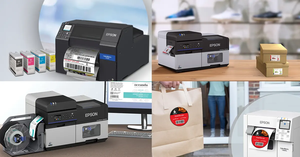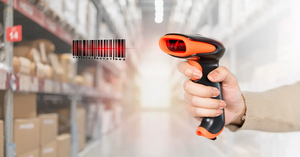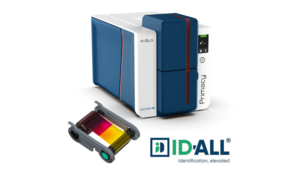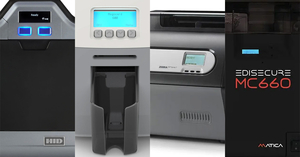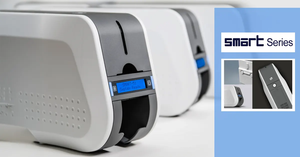10 Questions to Ask that Identify Your ID Card Needs

Okay, so you’re getting ready to buy an ID card printer, but you haven’t really thought much about what your ID card needs actually are, right? In fact, you don’t really even know where to begin. Don’t worry, you’re in good company. One thing we know for sure is that identifying your ID-card needs carefully and clearly really helps you make the right ID-card printer decision.
Today’s ID cards can be really basic (a photo and a couple of lines of information on one side) or quite sophisticated with data-storage and security features. Different ID-card printer models are designed for different needs, card volumes, applications and circumstances.
Let’s take a look at 10 basic questions that help identify your ID card needs (there are others, but these are a great start).
- What will your organization and the people receiving ID cards use them for? Just for simple visual identification? Or will they also be used for access privileges or to hold financial information? Will they be used for multiple purposes? These questions help you understand what type of information the card needs to reveal visually or hold digitally.
- Who is using your ID cards? That is, who are you issuing them to? Who is using the cards helps define card use. If you’re issuing ID cards to visitors every day, that could be hundreds of cards, or just a few. It could also mean very limited information requirements, depending on what the visitors use the cards for. If you’re issuing cards only to new employees, you could need just a few cards each week, but each may need detailed information for multiple functions and security requirements. Perhaps you’re issuing cards to employees and visitors and members or students every day–in which case your ID card printer needs many capabilities.
- How much information do your cards need to present visually (i.e., for humans to read)? Your answer to this question will determine whether you need to print one-sided or dual-sided ID cards. The more information you need to present visually on the card, the more likely your layout will require two-sided cards.
- How many cards do you need to produce on a daily basis? Your day-to-day card-printing volume is important to identifying the card printer appropriate capacity and speed. Some businesses have low ID-card volume requirements and need only one type of card, while others issue hundreds of cards each day for multiple applications and users.
- Does your ID printer need to be networked to allow a number of individuals to print cards? Only you know your operation, so try to identify each person in the organization you think will need to enter user information and print ID cards regularly or on occasion. Each of these individuals can print ID cards right from their desktop if the ID card printer is network ready for USB or Ethernet.
- What about printer mobility? Do you need to move the ID card printer from one location to another, or will you use it in one location only? This really comes down to printer portability. If portability is important you’ll want to buy an ID-card printer that is compact and lightweight.
- Will your cards be used for automated access control? That is, will users gain access to restricted areas or mechanical or digital devices with their card? Will the cards be scanned? If so, will they be scanned by physical “contact” reader or by a “contactless” reader that scans with radio waves (Smart cards and RFID cards)?
- What data do you need to “encode” on your cards? Card printers offer several ways to securely encode information onto the cards, and how your answer this question determines whether you need to print cards with magnetic stripes or barcodes, of if you need readable “smart” cards (capable of storing multiple data strings, including encrypted certificates for the greatest security possible). Encoded data can be “read” by a mechanical reader in any device or space the card holder seeks access to–from copy machines, to computers, to member areas and secure facilities. Data commonly encoded onto cards include credentials for access to buildings, security clearances, member services or other perks exclusive to the card holder, and monitoring activity (e.g., for loyalty programs) and tracking member benefits or time and attendance.
- How important are flawless color images or edge-to-edge coverage? If your cards are smart cards (which contain surface irregularities that have to be printed over) or you want/need printing that covers 100% of the card surface, you’ll likely need your ID card printer to be capable of “retransfer” or reverse transfer printing. This more costly printing method produces a clearer image and lasts longer than regular “direct-to-card” printing technology.
- Are your card uses or users of such a nature that cards are likely to wear out? Here the issue is card durability, which is enhanced by lamination. Laminated cards have a thin clear polyester film applied to the card surface that prevents printing on the card surface from fading or wearing away. Lamination extends card longevity and reduces time and cost of frequent card replacement.
Businesses, enterprises, and institutions have many ID Card printer options these days, and selecting the right printer is important to meeting your business needs and your budget. Determining how your organization will use the printer and the features it needs makes the decision process easier and smarter. If you have other questions, give our ID card printer experts a call–they have all the answers.
